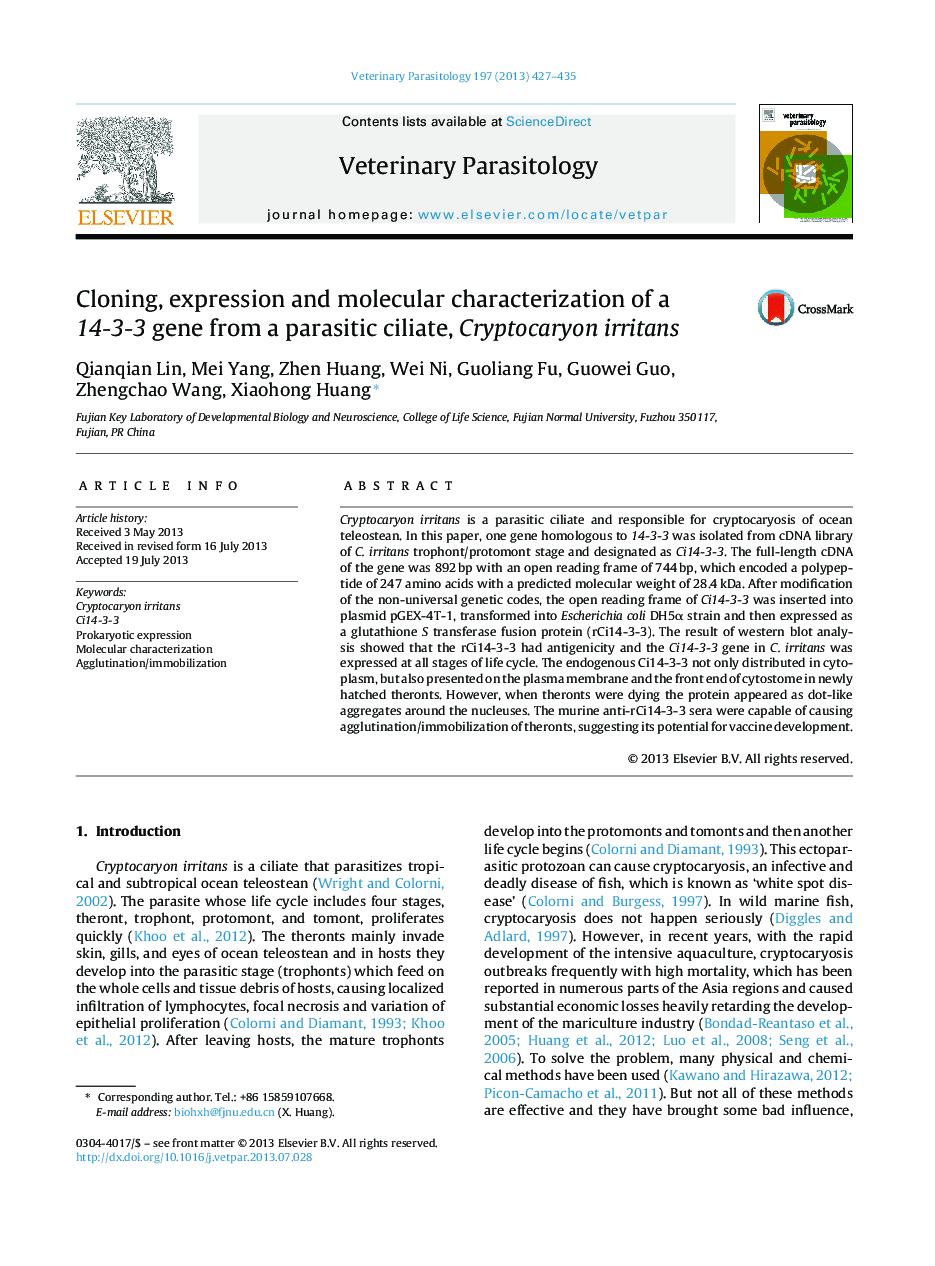| Article ID | Journal | Published Year | Pages | File Type |
|---|---|---|---|---|
| 5803963 | Veterinary Parasitology | 2013 | 9 Pages |
Cryptocaryon irritans is a parasitic ciliate and responsible for cryptocaryosis of ocean teleostean. In this paper, one gene homologous to 14-3-3 was isolated from cDNA library of C. irritans trophont/protomont stage and designated as Ci14-3-3. The full-length cDNA of the gene was 892 bp with an open reading frame of 744 bp, which encoded a polypeptide of 247 amino acids with a predicted molecular weight of 28.4 kDa. After modification of the non-universal genetic codes, the open reading frame of Ci14-3-3 was inserted into plasmid pGEX-4T-1, transformed into Escherichia coli DH5α strain and then expressed as a glutathione S transferase fusion protein (rCi14-3-3). The result of western blot analysis showed that the rCi14-3-3 had antigenicity and the Ci14-3-3 gene in C. irritans was expressed at all stages of life cycle. The endogenous Ci14-3-3 not only distributed in cytoplasm, but also presented on the plasma membrane and the front end of cytostome in newly hatched theronts. However, when theronts were dying the protein appeared as dot-like aggregates around the nucleuses. The murine anti-rCi14-3-3 sera were capable of causing agglutination/immobilization of theronts, suggesting its potential for vaccine development.
